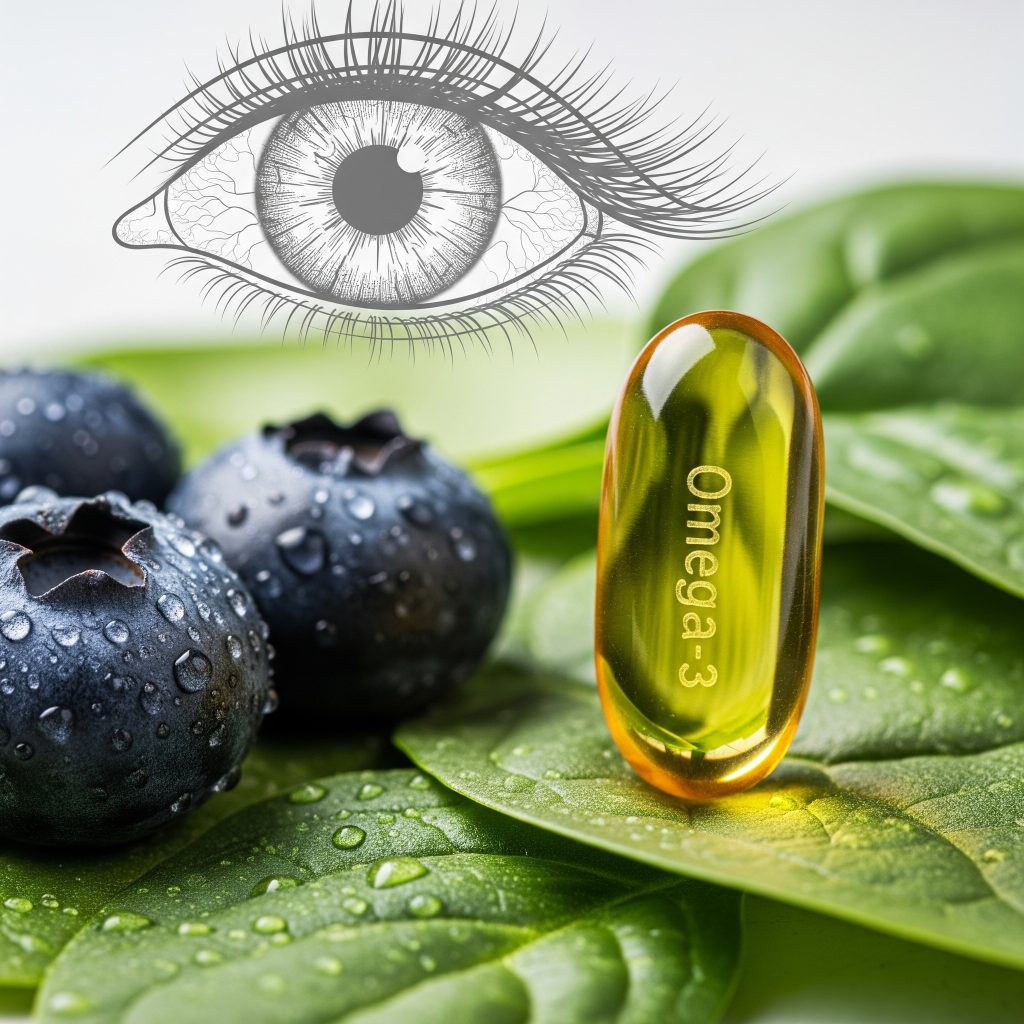
Omega 3 fatty acids, especially the long chain forms EPA and DHA, are critical for eye health. These essential nutrients must be obtained through diet, as the body cannot produce them. They play a vital role in regulating inflammation and maintaining healthy cell membrane function in eye tissues.
Dry eye disease is closely linked to ocular surface inflammation and imbalance in tear film oils. Omega 3 intake can improve tear quality and reduce inflammation, offering relief for dry eye symptoms. Clinical and observational studies have shown reductions in dryness and discomfort, though overall evidence remains nuanced. Many eye care professionals recommend two to four servings of omega 3 rich foods or supplements weekly.
DHA is a structural cornerstone of the retina, especially within photoreceptor cells, and supports light detection and visual processing. It also enhances retinal resilience against oxidative stress, helping slow progression of age related macular degeneration. Individuals with higher dietary omega 3 intake generally show lower risk of early stage macular degeneration and slower retinal damage over time.
Emerging evidence suggests omega 3s might help protect against elevated eye pressure and vascular damage. Animal studies show improved fluid drainage, potentially reducing glaucoma risk, while some human research links higher intake to a lower incidence of diabetic retinopathy. The anti inflammatory and vascular benefits of omega 3 may underlie these effects.
Oily fish like salmon, sardines, and mackerel are rich in EPA and DHA and remain the best dietary sources. Supplements can help, but research shows that adding omega 3 into supplement formulas may not improve outcomes for certain conditions. Some benefits seem tied to whole food contexts or combined nutrients, and direct supplementation for dry eye shows mixed results. Consultation with a healthcare provider is advised to determine the best approach.
Aim for two to four servings of oily fish per week to meet omega 3 needs. Plant sources like flaxseed and chia offer ALA, which has limited conversion to EPA and DHA. In cases where reaching dietary goals is difficult, supplements may help. It is important to be mindful of doses and possible side effects, such as minor digestive issues or interactions with medications.